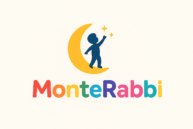According to ADA National Network, people with disabilities are first and foremost–people. They are people with individual interests, responsibilities, dreams, desires and future plans. They are not to be defined by their disabilities. They are moms, dads, sisters, sons, daughters, uncles, aunts, nephews, nieces and cousins who need to be first seen as that before you see their disability.
When you are addressing or talking about people with disabilities, there is something that we call people first language. It gives dignity and respect to the person and does not allow the disability to define them. You for example do not talk about an autistic boy. That is degrading and dehumanizing. You are giving the autism more preference than the boy. You would rather talk about boy living with autism. That is the proper people language first where you first see the boy as a living being before seeing the disability that is affecting their quality of life.
People First Language is a concept that has been preached and talked about in all circles where people living with disabilities are gathered. They want their dignity. They want to be seen as people first and not their disabilities first.
Traditionally, people living with disabilities have been seen as the lowly of the lowly in the society. They are seen as people who require to be pitied, to be sympathized with and shown kindness. But that narrative is quickly changing. Of late, we have seen really talented people with disabilities. We have seen leaders who have disabilities and their disabilities do not stop the from performing just like the average Joe or Jane.
I see some good application of People First language in the movie atypical when Sam’s mother and father attend a support group for parents whose children are living on the autism spectrum disorder. Doug, Sam’s father who is new to all these things and has never attended another support group refers to his son as an autistic child. He is looked down upon by the other people because he does not use people first language. Fortunately, he takes this kindly and teaches himself on the same.
Basics of People First Language
- Talk about people with disabilities in ordinary terms. You need to realize that they are people with goals, ambitions, interest, families and life goals. Treat them as that way before you refer to their disability
- Do not equate the person with the disability. Avoid talking of a demented person or epileptic child. Instead use person with dementia, person with epilepsy. The terms epileptic and demented are just medical diagnosis terms
- Talk of abilities as opposed to disabilities. For example you should say that so and so walks with crutches as opposed to saying that they are crippled.
- Avoid negative words that would elicit mercy or sympathy for example saying that so and so suffers, victim, physically challenged, handicapped
- Do not say that one is confined to a wheelchair. It is never so. People living with disabilities actually see wheelchairs as liberating
- Avoid using words like special, special needs as this elicits sympathy over the people being referred to
- Find a way to talk about the disability by mentioning the person first for example talk of kid on the spectrum struggling with speech as opposed to nonverbal autistic kid.
Below is a youtube video that talks more about People First Language and how important it is that you show value instead of sympathy to PLWDs.
